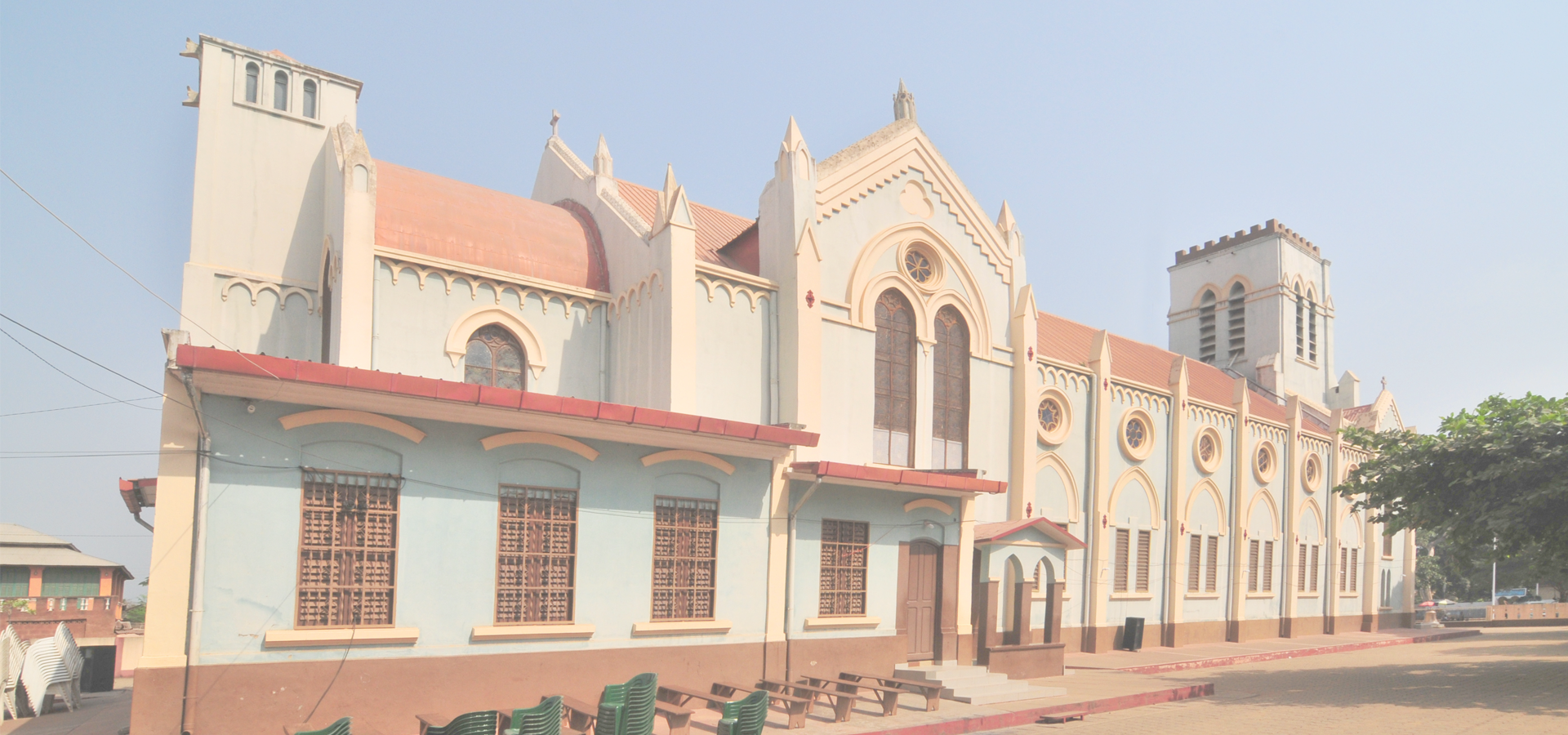Ouidah, Atlantique Department, Benin
🇧🇯 Ouidah or Whydah, formerly the chief port of the Kingdom of Whydah, is a city on the coast of the Republic of Benin.
Economy Freshwater and seawater fishing is the major profession in the region. Petroleum was discovered in the 1960s in offshore areas, while titanium, low quality iron ore, ilmenite and chromite are the major minerals.
History In local tradition Kpassa is supposed to have founded the town. This probably happened towards the end of the sixteenth century. The town was originally known as Glēxwé, literally 'Farmhouse', and was part of the Kingdom of Whydah.
Ouidah saw its role in international trade rise when the Royal African Company (RAC) constructed a fort there in 1650.
Whydah troops pushed their way into the African interior, capturing millions of people through wars, and selling them to European and Arab slave traders. By 1716, the Kingdom of Whydah had become the second largest slave port in the triangular trade, as noted by the crew of the slave ship Whydah Gally when it arrived to purchase 500 slaves from King Haffon to sell in Jamaica.
The Kingdom was ruled by King Haffon, who received his coronation crown as a gift from Portugal, until, in 1727, the Kingdom of Whydah was captured by the forces of King Agaja of Dahomey.
In 1860, Whydah was the port that sent the last recorded shipment of slaves to the United States, even though that country had prohibited the transatlantic slave trade in 1808. This illegal shipment was aboard the Clotilda and went to Mobile, Alabama.
France captured the town in 1894, by which time the town had declined due to the outlawing of the slave trade. In the time frame of 1946–1949 French government estimates put the population of Ouidah at about 14,600. By then it had a railway. It was a centre for production and trade in palm kernels, palm oil, copra, coffee, manioc, beans, tomatoes and onions. It was also a centre of the fish trade and the manufacture of vegetable oil. It had Catholic, Protestant and Muslim places of worship.
Fort of São João Baptista de Ajudá The Fort of São João Baptista de Ajudá (in English Fort of St John the Baptist of Ouidah) is a small fortress built by the Portuguese in Ouidah on the coast of Dahomey (originally Ajudá, from Hweda, on the Atlantic coast of modern Benin), reached by the Portuguese in 1580, after which it grew around the slave trade, for which the Slave Coast was already renowned. In 1680 the Portuguese governor of São Tomé and Príncipe was authorized to erect a fort but nothing was done and it was only in 1721 that construction of the fort, which was named São João Baptista de Ajudá, started. The fort, built on land given to Portugal by King Haffon of Whydah, remained under Portuguese control from 1721 until 1961.
Notable landmarks Attractions in Ouidah include a restored mansion of Brazilian slavers (the Maison du Brésil), a Vodun python temple, an early twentieth century basilica and the Sacred Forest of Kpasse, dotted with bronze statues.
The Route des Esclaves, by which slaves were taken to the beach, has numerous statues and monuments, including the Door of No Return, a memorial arch.
The Market Center of Ouidah, which was established by Scouts more than 20 years ago, trains young people in agricultural skills, thus helping to reverse the exodus towards the cities.
Ouidah is often considered the spiritual capital of the Vodun religion, and hosts an annual international Vodun conference.
Other landmarks include: • Basilique de l'Immaculée Conception • Ouidah Museum of History • Zinsou Foundation Museum.
World Heritage Status This site was added to the UNESCO World Heritage Tentative List on 31 October 1996 in the Cultural category.
Africa/Porto-Novo/Atlantique_Department

Ouidah has a population of over 91,688 people. Ouidah also forms the centre of the wider Atlantique Department which has a population of over 1,398,229 people.
To set up a UBI Lab for Ouidah see: https://www.ubilabnetwork.org Twitter: https://twitter.com/UBILabNetwork
Twin Towns - Sister Cities Ouidah has links with:
🇫🇷 Villeneuve-d'Ascq, France🇧🇯 Abomey-Calavi 6.449
🇧🇯 Porto-Novo 6.497
🇫🇷 Saint Germain en Laye 2.094
🇫🇷 St. Germain-en-Laye 2.094
🇫🇷 Saint-Germain-en-Laye 2.094
🇪🇸 L' Hospitalet de Llobregat 2.1
🇪🇸 L'Hospitalet de Llobregat 2.105
🇫🇷 Versailles 2.13
🇪🇸 Cerdanyola del Vallès 2.133
🇪🇸 Cornellà de Llobregat 2.071
🇫🇷 Cergy-Pontoise 2.063
🇪🇸 Sant Feliu de Llobregat 2.047
🇫🇷 Saint-Quentin-en-Yvelines 2.046
🇪🇸 Sant Boi de Llobregat 2.043
Locations Near: Ouidah 2.0878,6.35353
🇧🇯 Houéyogbé 1.933,6.45 d: 20.2
🇧🇯 Abomey-Calavi 2.358,6.449 d: 31.6
🇧🇯 Cotonou 2.426,6.367 d: 37.5
🇧🇯 Lokossa 1.717,6.633 d: 51.5
🇧🇯 Porto-Novo 2.605,6.497 d: 59.3
🇫🇷 Vierzon 2.066,7.223 d: 96.7
Antipodal to: Ouidah -177.912,-6.354
🇼🇸 Apia -171.76,-13.833 d: 18945.3
🇦🇸 Pago Pago -170.701,-14.279 d: 18832.7
🇹🇴 Nuku'alofa -175.216,-21.136 d: 18345.9
🇵🇫 Papeete -149.566,-17.537 d: 16696.5
🇺🇸 Līhuʻe -159.35,21.967 d: 16272.5
🇺🇸 Lihue -159.35,21.967 d: 16272.5
🇺🇸 Kapa'a -159.333,22.083 d: 16260.8
🇺🇸 Honolulu -157.85,21.3 d: 16240.7
🇺🇸 Pearl City -157.969,21.394 d: 16239.9